YMO 101: The Protégés, Associates and Etc.
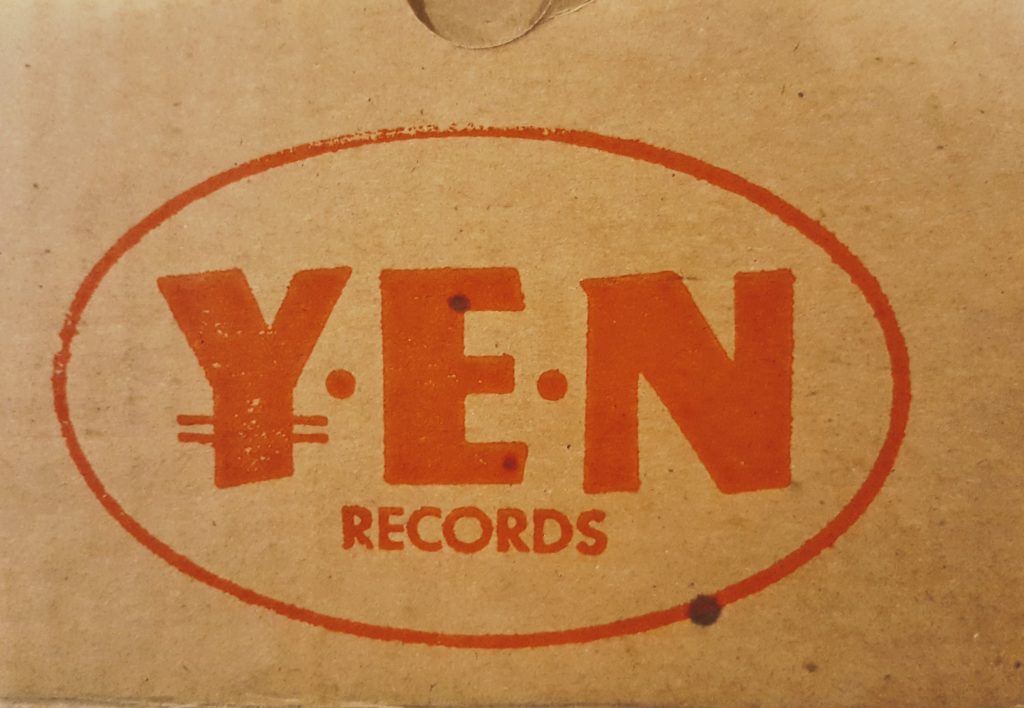
This is part six of my guide to Yellow Magic Orchestra.
Part 1: The Studio Albums
Part 2: The Live Albums
Part 3: The Compilations and Remix Records
Part 4: The Solo Records
Part 5: Pre-cursors and Side Projects
Yellow Magic Orchestra were a lot like Prince, (except less purple and horny – and I assume taller): they used their success as a means to launch a near-endless cavalcade of proteges, pop starlets, and associates into the the mainstream (or at least try). They even launched their own vanity label, Yen Records, the logo of which is featured above.
I couldn’t possibly write about every single artist that YMO was associated with, that would take far too long (and this ran long as it is). Instead, this focuses on acts who I found noteworthy in one way or another. Either they had impressively long discographies, a strong connection with someone in YMO, were a substantial success in Japan, or were just damn good.
Of course, this list is entirely subjective, so if you think I left out an act worth mentioning, please tell me about them in the comments!
Jun Togawa
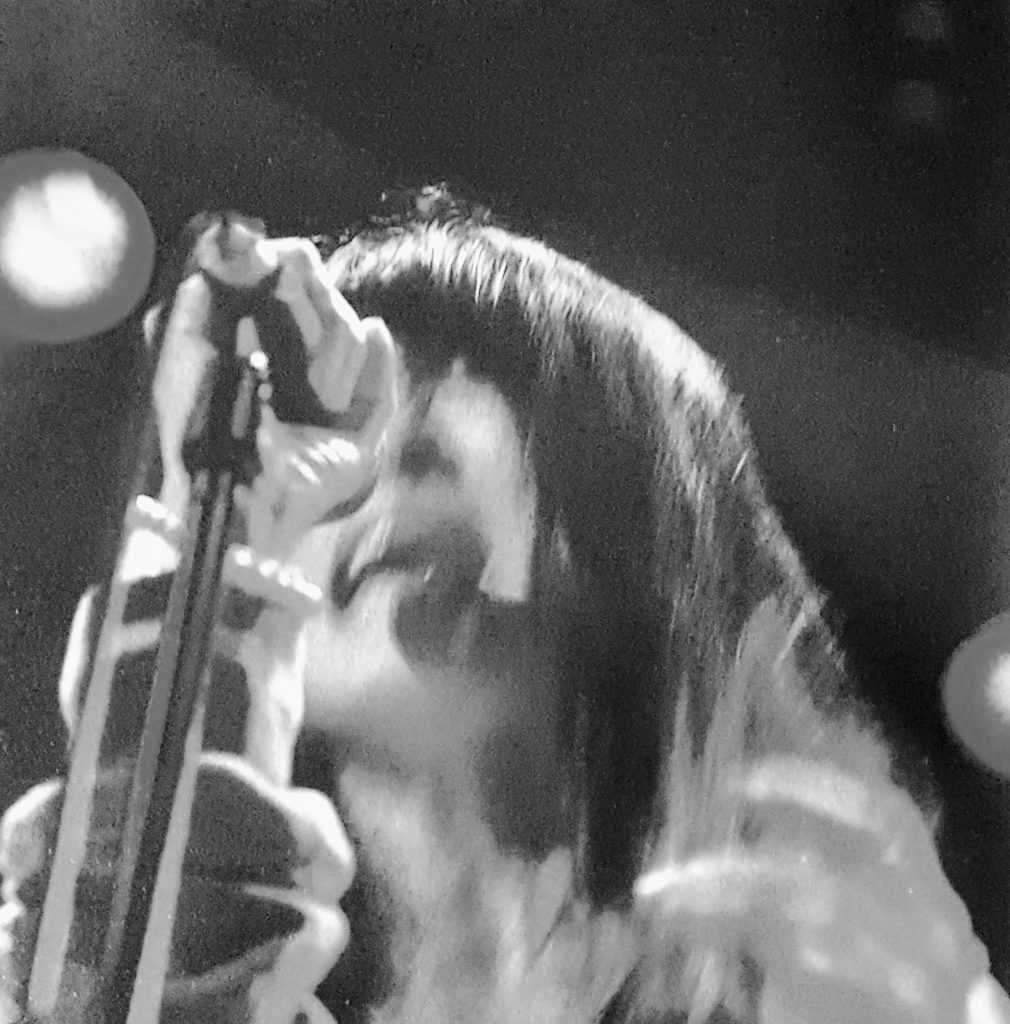
From a creative standpoint, Jun Togawa is only tangentially related to core YMO crew. She doesn’t appear on any of their albums and she never performed with them in concert to the best of my knowledge. The only time that her and any YMO member worked together was in 1985, when Hosono produced a single track on her 1984 album Tamahimesama. Instead, her association with YMO is much more of a business one. She was signed to YMO’s Yen Records label in the mid-80s.
Don’t let that rather tenuous connection dissuade you from pursuing her extensive solo discography though, because she might be the most interesting and talented musician on this list. She’s certainly the craziest. Fucking legend.
Jun Togawa’s music is entirely one-of-a-kind. She started out kind of as a J-Pop idol, but quickly shed any resemblence of normalcy thanks to her utterly bizarre and outlandish performances and songs. Her best solo track, “Suki Suki Daisuki” has a chorus that roughly translates to:
Kiss me until my lips explode
Hold me until my ribs crack
I love you so much
Say you’ll love me, or I’ll kill you
And on the Jun Togawa weirdness scale, that’s probably a solid six. She has a song about turning into a giant insect woman.
Obviously, having some understanding of her lyrics, which are predominately in Japanese, helps in appreciating her music, but it’s not entirely necessary. I can’t understand most of her songs, but I still can enjoy them thanks to their unique production and her fantastic vocals. Did I mention that Jun Togawa is an ungodly talented singer? Again, going back to “Suki Suki Daisuki,” she exhibits three clearly different vocal styles on that track. The first is your standard happy-go-lucky squeaky J-Pop vocal. Then she shifts dramatically to an almost operatic bellow before transitioning again to an unhinged scream. All while maintaining perfect pitch. She’s one of the greatest vocalists of her generation.
As I said before, her discography is rather immense and a bit intimidating. It’s also overpopulated with greatest hits and re-issues, so you have to be a bit careful. But her two mid-80s classics, Tamahimesama and Suki Suki Daisuki are good starting points. Any of her greatest hits would be good as well. You also can’t go wrong with her 2016 collaboration with the Osaka metal/classical group Vampillia. That album, entitled わたしが鳴こうホトトギス, is comprised of self-covers, redone in the Vampillia style. Not only does it serve as a good introduction to her music, but it’s also a first impression for Vampillia, who are an insanely fantastic group.
Koji Ueno
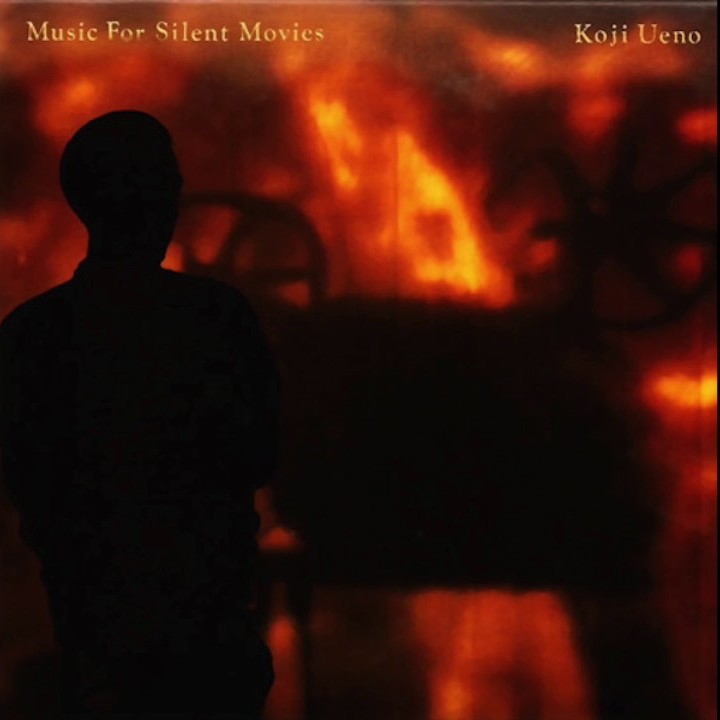
In the early 80s, Koji Ueno contributed keyboards to a few solo records by Haruomi Hosono and Yukihiro Takahashi. His rather pedestrian work on those records serve as a poor introduction to his music proper, which I can only describe at batshit insanity. Although if you want to get more technical I guess a proper description would be avant-garde classical jazz…I guess?
You know The Art Of Noises? No, I’m not talking about the group, but the manifesto from which they got their name. It’s a paper by noise music pioneer Luigi Russolo that says humankind has become bored with traditional music and that further experimentation into turning non-musical noises into music is the future of music. Ueno seemingly ran with that idea. Don’t consider this to be a knock against the dude, but I would barely classify some of his releases as “music,” as they swing so far from what is typically considering as much. Incredibly dissonant and at time ignoring the basics of melody, rhythm and basic song structure.
So, this is clearly not for everyone. However, if you’re in the mood for music that will challenge your definition of what music is, give it a go. Start with Music For Silent Movies, that’s his album on Yen Records and the closest one to what I would call “accessible,” although it’s not really accessible at all.
Guernica
I mentioned Jun Togawa, and how she’s crazy. And I also mentioned Koji Ueno, and how he’s crazy. Well, guess what? They teamed up.
Guernica is (surprise) a really weird band and (double surprise) kind of hard to describe. They run the gamut from fairly-traditional 80s synthpop to operatic baroque pop to, I don’t even know how to describe it…cabaret music from Hell? All the tracks, regardless of style, feature downright breathtaking vocal acrobatics by Togawa, who shifts between her radically different vocal deliveries with remarkable ease and grace. She yodels here.
This is a great band if you’re in the mood for something beyond insane but still want it to resemble something that comes close to traditional pop music. These songs have choruses, melodies and time signatures, more than I can say for Ueno’s solo stuff. Their debut album 改造への躍動 is a must buy, but if you do some digging you might be able to find either of the 3-disc complete discography box sets they put out.
Hajime Tachibana
This man is a genius. That being said, tread carefully in his waters.
Tachibana started out as a guitarist. He played in the highly influential Japanese new wave act The Plastics, and also performed alongside Yukihiro Takahashi and Haruomi Hosono on some of their solo albums, as well as records by other YMO associates like Susan and Sandii. He also has quite the solo career, releasing eight albums to date.
Each of them sound entirely different.
His first album, H, is a jazz record, while his follow-up, Hm, is a near-indefinable collection of contemporary classical compositions and avant-garde experimentation. They probably have their fans but I’m not one of them.
Inoyama Land
An instrumental new age duo who released one album with Hosono on board as a producer. That album, Danzindan-Pojidon, was released in 1983 and is really, really good. Seriously good. Beyond mellow, ambient music that puts the best work by Brian Eno to shame. This is my go-to chill out record, and should be in textbooks as the definitive example of how to make new age music that isn’t boring. It’s rich, textured and moves beyond the simple ambient soundscapes the genre is usually guilty of.
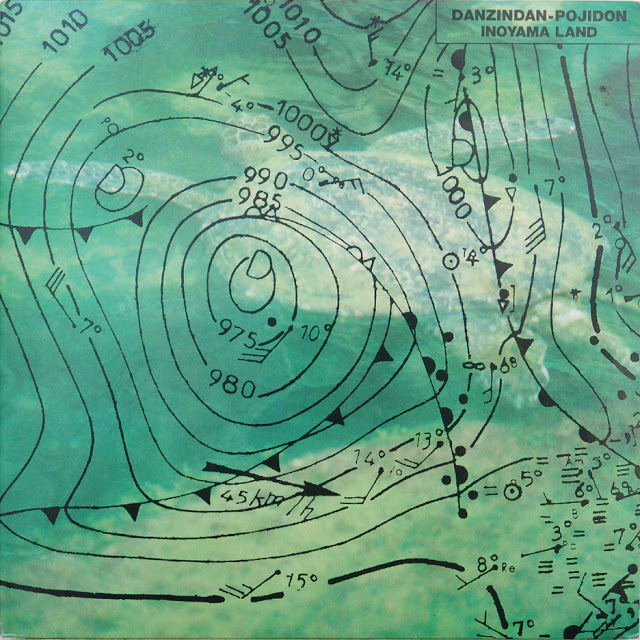
As it stands though, it’s painfully out-of-print, perhaps the hardest to find of any YMO associate release. I don’t believe it was ever given a CD release outside of the Yen Records box set, and the LP must’ve gone out of print soon after it was pressed. Copies today go for well over $200 online, and in my three years in Tokyo I have never seen one in stores ever. Find it online and download it, I highly doubt it’ll ever get back in print.
Interior
A lesser Inoyama Land, but worthwhile nonetheless. Their 1982 self-titled debut was co-produced by Hosono and it features several nice, laid back instrumental electronic tracks.
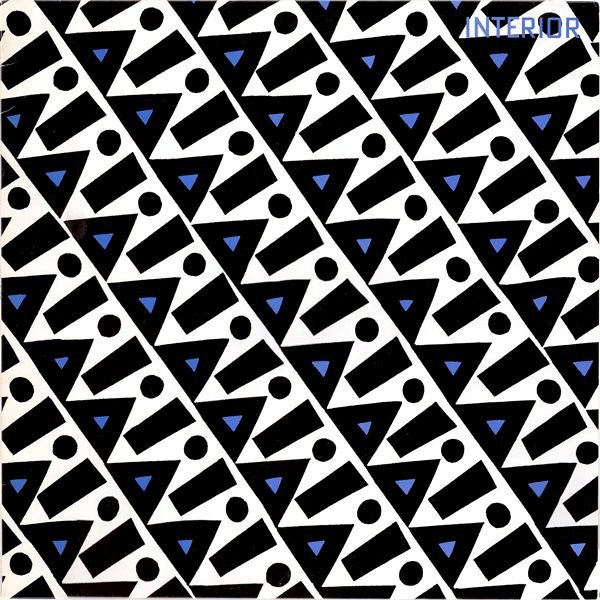
The album actually has more rhythm and percussion than Inoyama Land’s record, but as a whole it feels more ambient and new age, mostly due to its sparse nature: not many strong melodies to be found here. The tracks are more like hints of proper songs, it’s not entirely fleshed out. This album was actually re-released in America in the mid-80s by the new age label Windham Hill, which should probably tell you all you want to know about it.
Their second (and last) album came out in 1987. It’s called Design (ha) and it’s VERY new age. I dig this king of stuff because it’s good music to write to, but I’m probably in the minority there.
Hideki Matsutake/Logic System
YMO is credited as a threesome, but to many people the sound of YMO wouldn’t exist without the help of this man, who served as the group’s sequencer programmer on their first two legendary albums. Collaborating with countless artists and releasing albums of his own under various names over the years, Matsutake is a flawed genius; an obvious talent of super-human ability with the occasional lapse in terms of creative ability.

His first three albums as Logic System, Venus, Logic and Orient Express, are all absolutely fantastic examples of early 80s electronic music. They bridge the gap between the ambient sound of Tangerine Dream and the poppier dance stuff that would dominate the synthpop era. Amazing records I highly recommend. Another must buy (but slightly harder to find) is his 1979 album Digital Moon, a collection of James Bond theme covers. Seriously incredible with funky electronic music light years ahead of its time. It has vocoder Goldfinger. You need to buy it.
He’s continued to deliver solid contributions to other aritsts’ music throughout the 80s and into today, if you’re interested in that, splurge for the massive Logic Chronicle box set, which compiles highlights form his solo career as well as work with other artists. It’ll help you decide where to go next.
Miharu Koshi
A longtime collaborator with Hosono, as well as a few others from the YMO staple, Koshi has been releasing music since 1979. While her collaborations with YMO members go back to her debut LP with Sakamoto playing keyboards, you don’t really hear much of a YMO influence until her third record, 1981’s Make Up. That album features the previously mentioned Hideki Matsutake, as well as occasional YMO guitarist Kenji Omura.
Her relationship with Hosono kicked into high gear after that though, and he worked with her throughout the rest of the 80s and into the 90s, producing and/or co-writing many of her albums during that time. Of those, I highly recommend Tutu, Parallelisme and Boy Soprano. They’re all great records that do a fantastic job of showing off Koshi’s amazing voice. More recently, she’s moved away from the synthpop sound of the 80s and more towards a jazzy french-pop style, but her voice is still on point, so I would even recommend those albums if you listen to her early stuff and dig it. An amazing artist.
Sheena & The Rokkets
Combine The Ramones, Blondie, Madonna and Lauri Anderson and you get Sheena. She had an remarkably deep discography, releasing music at a pretty steady clip from 1979 until her death in 2016. Any of her first four records (#1, Vacuum Pack, Channel Good, and Pinup Baby Blues) are good jumping on points. The middle two feature a good amount of contributions from the YMO crew, and sound much like the music they were putting out at that time.
Vacuum Pack is the most YMO-like of the bunch. It closes with the Sakamoto instrumental “Rocket Factory” and it also marks the first appearance of the YMO classic “Radio Junk,” written by Takahashi. That track is literally one of the greatest songs of all-time (no really). The album also features Sheena’s anthem of sorts, the Hosono-penned life-affirming anthem “You Can Dream” and a rad cover of “You Really Got Me Now.”
Sheena was dope. Listen to Sheena.
Testpattern
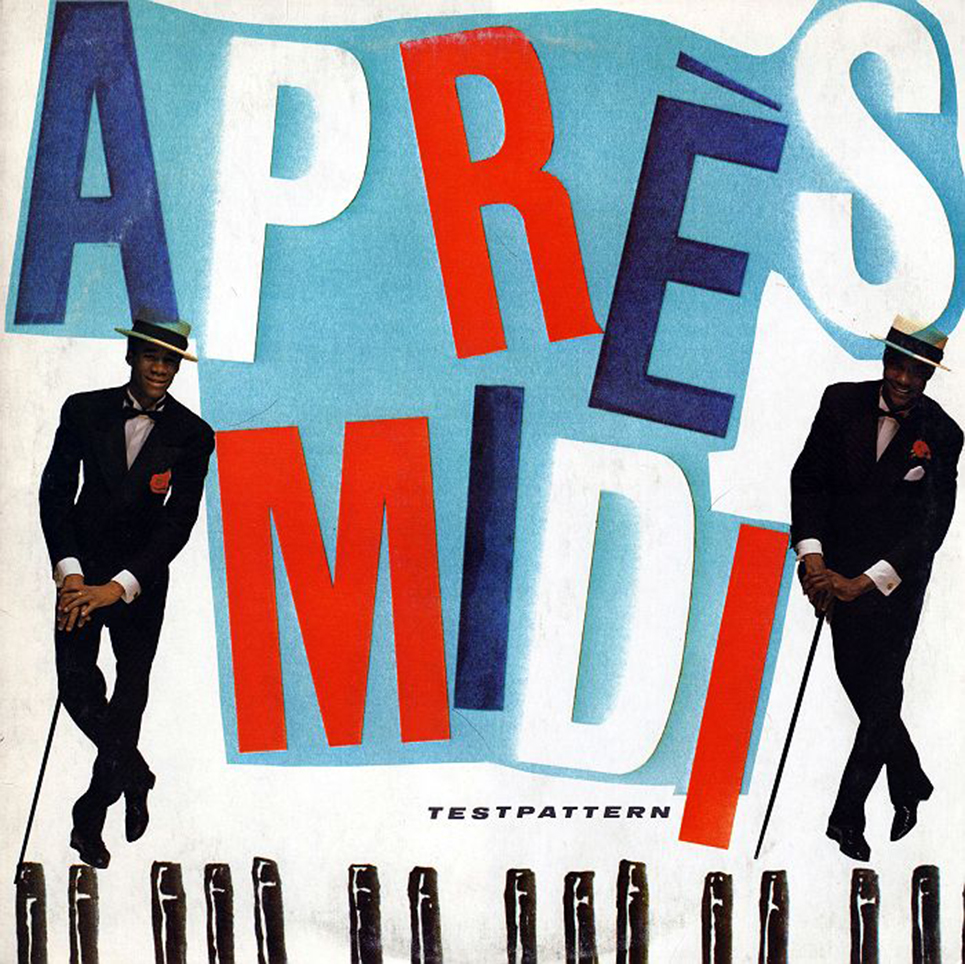
Testpattern was a duo comprised of Fumio Ichimura and Masao Hiruma. I have no idea who either are, so don’t ask me.
In fact, don’t ask me much about this group. They only released one album, Apres-Midi, which was produced by Hosono and came out in 1981. After that, some other tracks showed up on a pair of Yen Records compilations and that was it.
Oh, did I mention that everything they released was absolutely incredible?
Apres-Midi is an utterly amazing record. I’ve heard it compared to Telex, which is kind of apt I guess. It’s certainly weird, but it has a disconnected, distant feeling that the best Telex can’t even come close to. I would be far more likely to compare it to Kraftwerk, especially with monotone tracks like “Modern Living,” which features a lifeless monologues about hopeless lives in boom-era Japan. Other tracks are mostly instrumental, and feature driving sequencer rhythms matched with otherworldly sound effects. Totally mesmerizing.
You probably want to buy this record, right? Too bad! It’s been out of print forever and is worth a fortune!
Just download it somewhere. It’s okay.
Rajie
Another female singer who teamed up with YMO in the early 80s. Rajie released six albums between 1977 and 1980, and from what I’ve been able to gather online, YMO collaborated with her for two of them, 1979’s Quatre and Le Trottoir D’Apres Midi from 1980 (of no relation to the Testpattern album of a similar name, although they worked on the album’s art apparently).
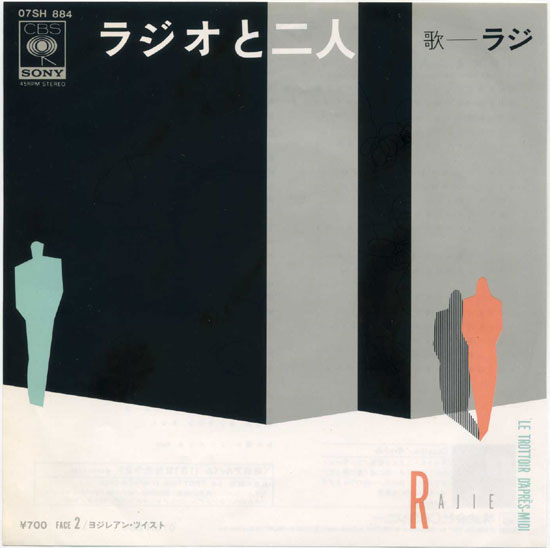
They’re both good, and a little different. Rajie has a soulful, seductive voice, a bit deeper than the typical J-pop star. Think Sade, right down to the slight jazz influence.
Quatre features the core YMO trio with Hideki Matsutake and Kenji Omura tagging along as well, while Le Trottoir D’Apres Midi also includes Akiko Yano and a couple tracks written by fellow YMO associate Taeko Ohnuki. To be honest, neither album are great, but both have some standout tunes. I recommend the last one, it’s more in the vein of YMO and features more upbeat, fun tracks than the other.
Haruo Chikada

A J-pop idol who pumped out four albums between 1979 and 1981, Chikada is relatively forgettable save for his first album, Natural Beauty (天然の美) as it features four songs that were arranged by Yellow Magic Orchestra (they even get a credit as a group). The songs were still written by Chikada and his crew though, so don’t go in expecting some lost YMO jams. These are cheesy 80s disco tracks, albiet cheesy 80s tracks with some exceptional production and instrumentation. You can this one hella cheap on LP, and I say pick it up. It’s super fun, and the opener, “Electric Love Story” is an amazing slice of vintage disco.
Susan
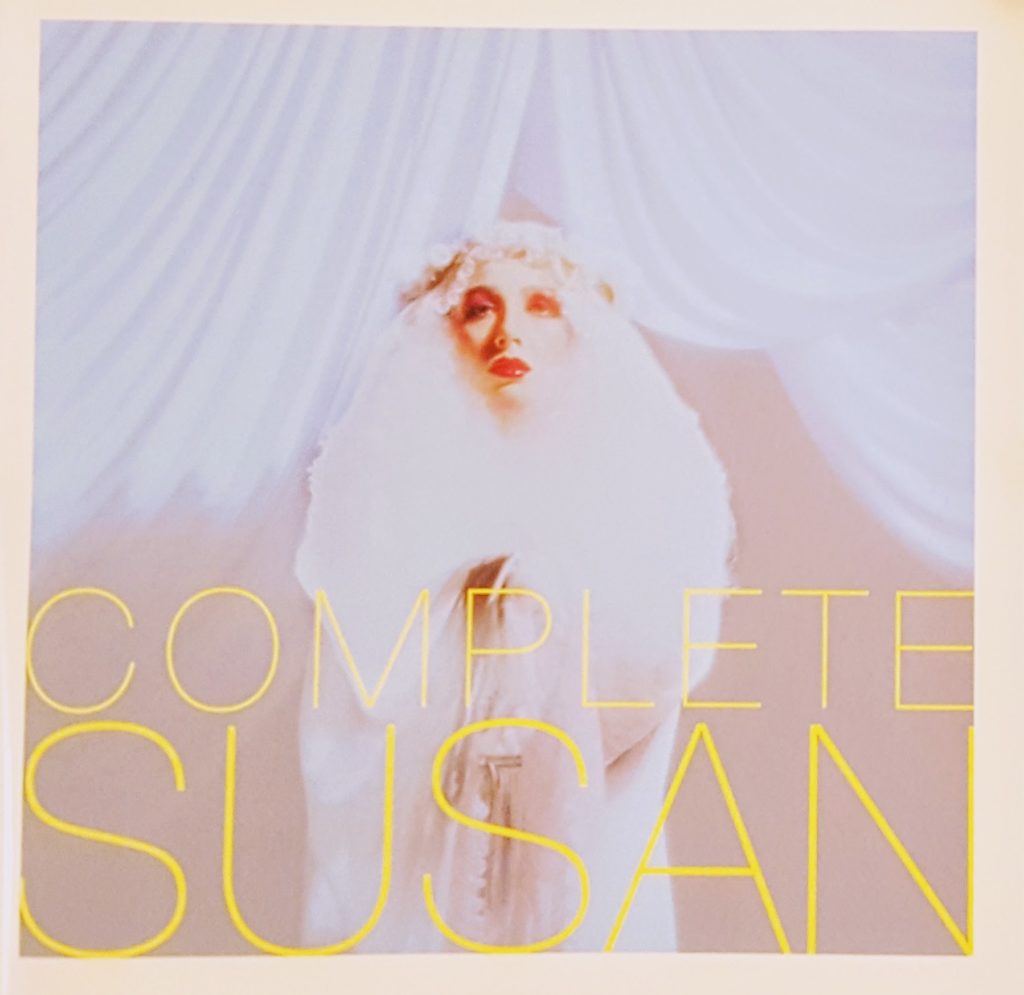
The eponymous Susan was one of the first woman singers to collaborate with the YMO crew. Her first album, Do You Believe In Mazik, was released in 1980 and features pretty much everyone who was involved with YMO up to that point. Takahashi, Sakamoto and Hosono all perform alongside her, and also joining her are Hajime Tachibana, Keiichi Suzuki, Kenji Omura and Hideki Matsutake. As you might imagine with that dream team, it’s a fantastic record that combines the technopop sound of early, pre-sampler YMO with the fun disco-pop style that was popular at the time. Unfortunately, Susan only released one more album, The Girl Can’t Help It, which came out in 1981. It’s good, but not as good as the first.
While her scant discography is disappointing, it does mean that all of her work is relatively easy to track down. In fact, in 2005 Complete Susan was released, a 2CD set that, as its title suggests, compiles pretty much everything she ever recorded. Pick it up if you find it. You’ll be happy you did.
Cosmic Invention
In November of 1980, YMO played what would become a rather legendary performance at Budokan. The Live At Budokan CD is culled from this performance, mostly because it was so widely bootlegged. Cosmic Invention was the opening act for that show. Everyone in this group is a kid, probably between 12 and 16 years old. They only released a single album, Cosmorama, which came out in 1981. It’s okay.
Okay, to be honest a lot of it is pretty boring. The synth-heavy production is fun, but the vocals are weak and sound a lot like what you would expect from a group of kids.
There are two exceptions though. The first is “Yakimoki” a super-fun and upbeat dance tune with a killer keyboard riff and some fun random bleep and bloop synth effects. The second is “Computer Obaachan” which is one of the greatest songs of the early synthpop era. It was written by Sakamoto, but I don’t think he ever performed it. Instead he handed it off to this group. And to be honest, it wouldn’t have worked if Sakamoto himself had performed it. It’s a silly song about an old lady who is actually a computer (or something). It’s whimsical fun, and absolutely works wonderfully when sung by a bunch of kids.
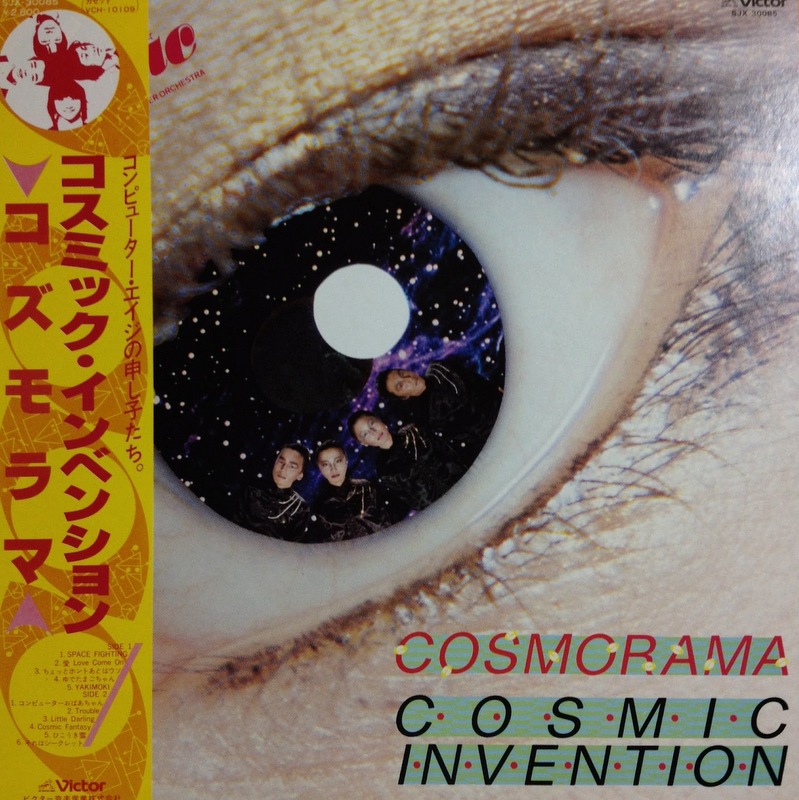
Cosmorama is really hard to find, but both “Yakimoki” and “Computer Obaachan” are easy to find on various new wave compilations in Japan. “Computer Obaachan” is even sort of a classic in Japan, with countless acts covering it. If you can’t find the original, you can find another version with ease.
Kazuhiko Katoh
Formerly of the influential Japanese rock group The Folk Crusaders, Katoh got his solo career started in 1971 with Super Gas, and he would release three more albums between then and 1978. I’ve never heard any of those, but from what I can gather via YouTube, they were fairly standard pop/rock affairs.
But when he teamed up with Sakamoto and company in 1978, everything changed, moving away from rock and into a strange new wave synth-pop meets bassa nova and jazz hybrid that remains unlike anything I’ve heard before or since. The albums he released during this time period; Gardenia, Papa Hemingway, L’Opera Fragile, Belle Excentrique, あの頃、マリー・ローランサン and Venezia are all just absolutely incredible. And most of them feature a stellar cast of supporting musicians. All three members of YMO, as well as Akiko Yano, Kenji Omura and Hideki Matsutake, all drop in to contribute. But the albums still have a very unique flair to them that make them unlike other YMO collaborative efforts. These don’t sound like YMO with a different lead singer or a slightly different focus, they’re entirely unique.
Katoh stopped working with YMO in the mid-80s, and would only release two albums after that, 1987’s The Maltese Falcon and Bolero California in 1991. These are much more jazzy than his previous albums, but they’re still good, and feature Katoh’s unique, dry vocals throughout.
Unfortunately, Katoh died in 2009. But he left behind a discography that is ripe for discovery. Please do.
Kenji Omura
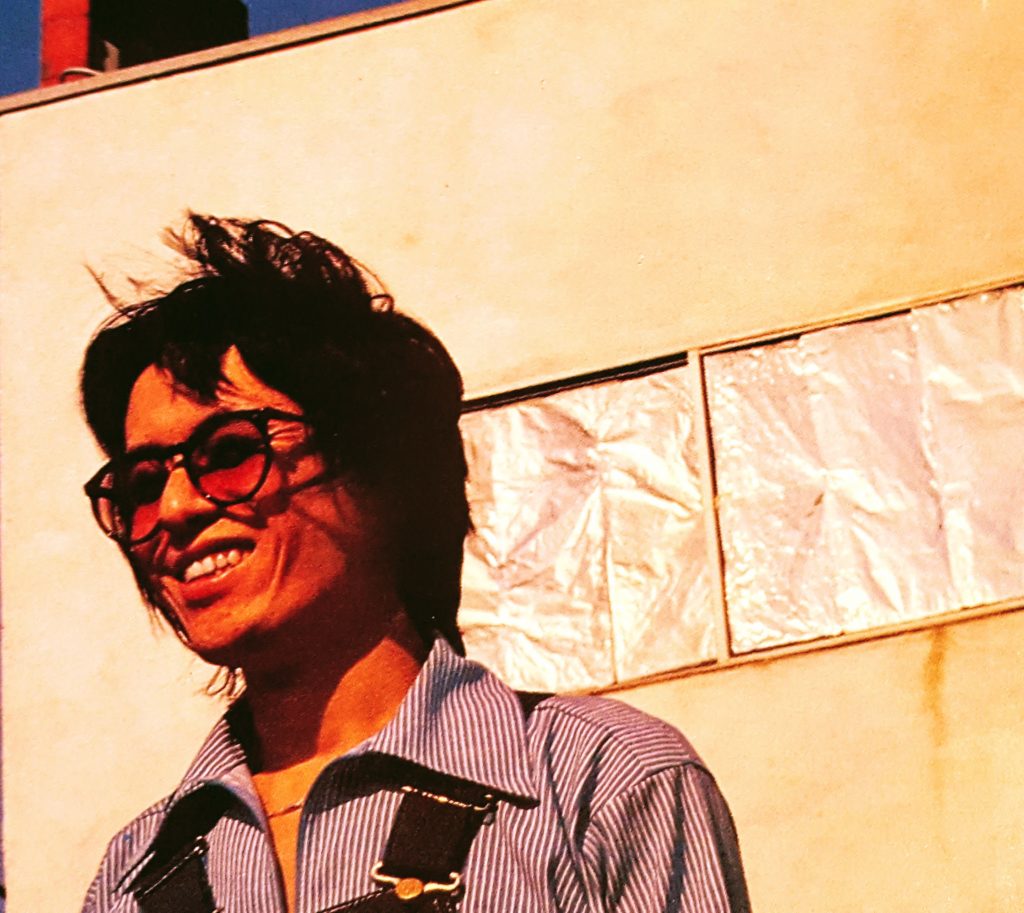
Omura started out as a session guitarist, and he started working with the guys from YMO even before YMO was formed. He’s on Yukihiro Takahashi’s 1978 solo debut, and is also on Sakamoto’s 1979 Summer Nerves album. At the same time, he had a successful career as a solo artist, releasing several albums during the latter half of the 70s. While he never appeared on any YMO studio records, he functioned as the band’s touring guitarist in the 80s, so any live album you’ll find from that decade features his amazing guitar work.
As a solo artist, Omura stuck almost entirely to jazz, so if that’s not your thing…that’s not your thing. However, I can recommend one of his solo records to any YMO fan without reservation, his 1981 album Spring Is Nearly Here. It’s the only one that’s a complete collaboration with YMO, and very synth-pop. Lots of good stuff on this record, including the instrumental “Seiko Is Always On Time” and a wonderful cover of “Far East Man.” But the real highlights are two tunes written by Takahashi, “The Defector” and “Maps,” the latter of which you can find a live performance of on YMO’s Live At Budokan album.
Omura would only release one more solo album, 1983’s Gaijin Heaven, which is more jazz-focused but I still recommend if for nothing else than the title track, which is a shockingly biting take on how Japan treats its foreign citizens. His 1978 album Kenji Shock is also a good choice, and features what seems to be his signature tune, “Left Handed Woman.”
Kazumi Watanabe

If you’ve read the previous entries in this series, then you might remember that Kazumi Watanabe was YMO’s original touring guitarist. He’s on all of their live albums that were recorded in the 70s, save for Public Pressure, which he edited out of for legal reasons. He also shows up on various YMO solo and associate records, including some of the best albums by Sakamoto himself and the fantastic Kazuhiko Katoh.
Like Kenji Omura, he’s a jazz guitarist. Unlike Kenji Omura, he is strictly a jazz guitarist. Sure, he may go off on the diversion now and then when he guest spots on other artist’s albums, but every solo record of his I’ve heard is jazz. Strictly jazz. So, do with that information as you will.
One album I can recommend that bares his name on the cover is his 1982 collaboration with Sakamoto, Tokyo Joe. It’s a compilation that features most of the songs the two worked on together. About half of it is on Sakamoto’s Thousand Knives (which you should own) but there are some other tracks on here that are a little hard to get otherwise. These include the amazing title track and two fantastic live cuts with the wonderful Akiko Yano; “Zai Guang Dong Shoo Nian” and “The River Must Flow.”
Akiko Yano

Speaking of Akiko Yano… she was Sakamoto’s wife and served as a touring member of YMO during the 80s. She shows up on the Budokan album and a few other live releases. She’s an amazing keyboardist and singer and has a wonderfully varied discography that’s full of hidden gems. She sings mostly in Japanese, but don’t let that put you off, the music often shatters the language barrier.
Her 1980 album ごはんができたよ (aka Dinner is Ready) is one of the most accessible, and features YMO along with Kenji Omura serving as the backup band. The version of “Tong Poo” here (which is kind of signature song) is superior to the original in my opinion. Additionally, I’m a fan of her 2010 album 音楽堂, which includes an amazing piano only cover of Weezer’s “Say It Ain’t So.” And if you’re looking for some straight-up electronic pop, go for her latest release Welcome To Jupiter (which also features a new version of “Tong Poo”) and 飛ばしていくよ, a collaborative remix CD of sorts that features motherfucking Boom Boom Satellites on the amazing “Never Give Up On You.”
Virginia Astley
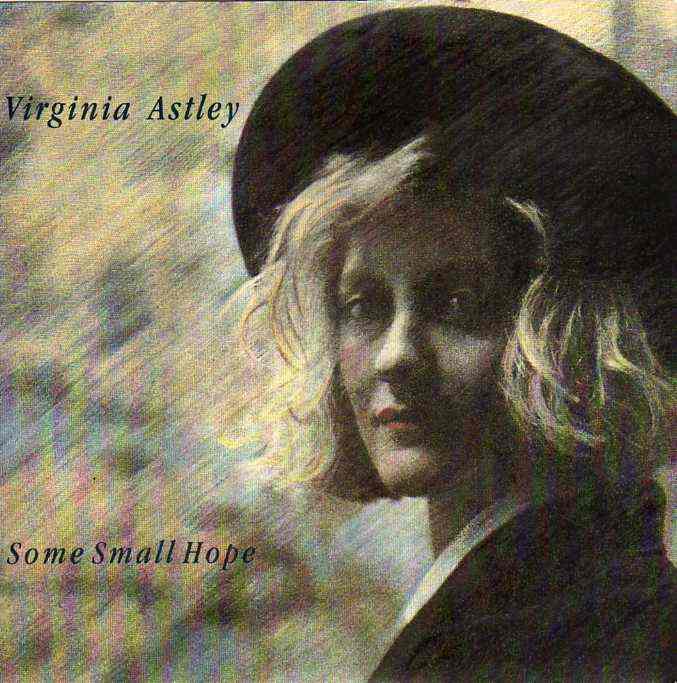
This is a pretty tenuous YMO connection, but the album is so good that it’s worth mentioning.
Virginia Astley is a British singer/songwriter who has been releasing music off-and-on since 1981. She only has six albums to her name, so she’s not exactly a prolific artist. She has a devoted fanbase though, so she’s certainly made an impact with her limited output.
Of interest to YMO fans would be her 1986 ethereal masterpiece Hope In A Darkened Place, which features production work and keyboards by Ryuichi Sakamoto and a guest vocal appearance by Japan’s David Sylvian. This is one of the most beautiful and haunting records I know, with Astley’s wonderful, otherworldly voice in perfect accompaniment with symphonic keyboard work.
It’s also a horribly depressing album about death, but try not to think about that.
Urban Dance
One of three big acts on Hosono’s Non-Standard label: he’s credited as an executive producer on both their albums, but I don’t hear much of his touch on either. And they sure as hell aren’t “non standard.” Their radio-friendly pop sheen is about as standard as it gets. Think Mister Mister, The Cutting Crew or Til Tuesday, that’s the style of synthpop we’re talking here. Nothing edgy, nothing unique, nothing remarkable. Just over-produced pop music pumped through about a dozen production effects and what sounds like twice as many synthesizers.
That being said, they’re not bad. I mean, the songs are decent enough. It’s just that they’re incredibly boring. Seriously, did the world need a Japanese Mister Mister? Their best track is probably “Alienlover.” Check that on YouTube and then if that interests you, maybe dig deeper. If you do happen to find yourself a fan, you can buy their entire output on the recently released UD Chronicle compilation.
Mikado
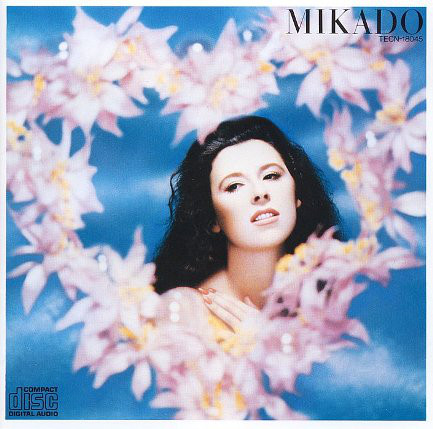
Another one of Hosono’s Non-Standard acts, Mikado put out a sole self-titled album in 1985. I’m featuring it here mostly because it’s one of the easier albums from the era to track down, not because it’s especially good.
Sure, it’s combination of french chanson pop with synth-pop instrumentation is cool and unique for the time, but it just washes over you. It’s not catchy at all, and the vocals by Pascale Borel are just boring. I’ve probably listened to this record half-a-dozen times and forget it by the time its over every single time I listen to it.
As I said, this is really easy to pick up. I suspect a lot of people like me bought it, decided they didn’t like it, and then sold it back. So if you’re hankering for some obscure 80s synthpop then maybe pick it up? But there’s a lot better stuff on this list.
Shi-Shonen
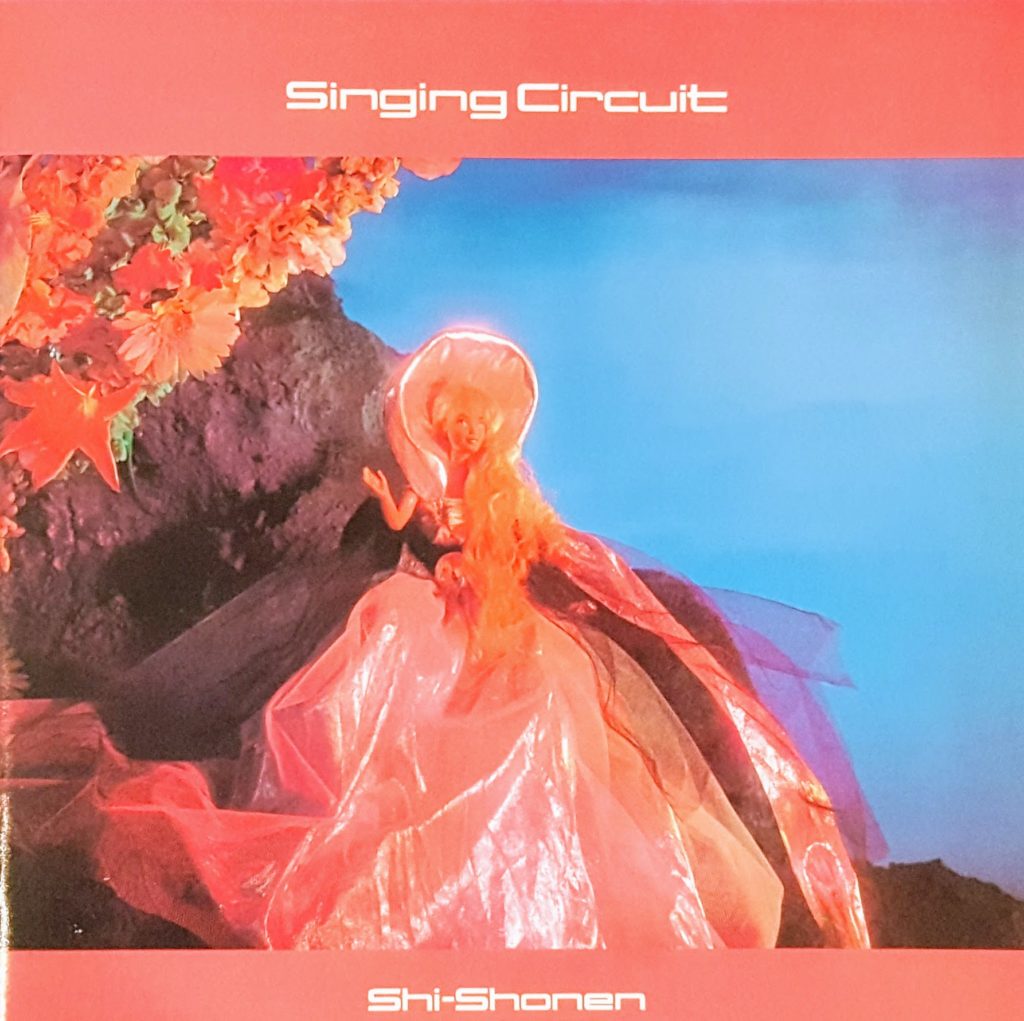
In some ways, Shi-Shonen are identical to Urban Dance. They were also signed to Hosono’s Non-Standard label. They also released just two albums before calling it quits. And Hosono served as an executive producer for both of them, just like he did with Urban Dance.
But unlike Urban Dance, Shi-Shonen were actually pretty good. Their debut record, Singing Circuit, is certainly shooting for the mainstream, but it’s just quirky enough to be different. They’re more low-key than their overproduced counterparts. While Urban Dance seemed content to overload every song with a mountain of digital synthesizers and hope for the best, Shi-Shonen understood that less was more. They were a synthpop act for sure, no doubt about that, but they seemed to understand the importance of letting songs breathe, and how to properly combine synthesizers and samplers with more traditional instruments.
They also just wrote better songs. “Lovely Singing Circuit” is a bubblegum masterpiece, and the ultra-catchy “Kiss Kiss Kiss,” with its frantic beats and goofy, saccharine lyrics, could’ve easily been a B-side to a Naughty Boys-era YMO track.
Singing Circuit isn’t too hard to find on CD. I recommend it.
Chris Mosdell
Ever wonder how YMO’s English lyrics were so good? It’s thanks to this guy, who wrote many of their English-language lyrics over the years, as well as lyrics for several other Japanese musicians who are on this list.
However, he only has one credit as a performer, the incredibly strange 1982 album Equasian. It is an exceptionally odd one, and definitely not reminiscent of his synth-pop work with his fellow YMO associates. I don’t even know how to describe it. It’s very rhythmic and not very strong on the melody front. It’s interesting, but honestly the music isn’t that strong, so it’s not very memorable. It certainly is an odd one though (and quite rare) so if you see it for an affordable price maybe pick it up just to hear something one-of-a-kind.
Koharu Kisaragi
This is another one where the YMO connection is rather slight, Sakamoto produced a played on a handful of songs on this singer’s sole album,1986’s Tokai No Seikatsu. However, the album is a genuine work of art and I feel worth mentioning even with the slight involvement of Sakamoto.
Kisaragi is kind of between Jun Togawa and Koshi Miharu, avant-garde and entirely unique, whilst being a fantastic singer at the same time. She also reminds me a bit of Bjork, especially on the album highlight (and Sakmoto production) “Neo-Planet.” her sing-song/screaming delivery would’ve easily fit on one of the Icelandic singer’s albums with The Sugarcubes.
This album isn’t exactly easy to find, and when it does show up online it goes for a mint. So this is yet another one you can file under “guilt-free download.”
Sandii
Sandii’s career is a little hard to chart because of all the groups she was in and the various aliases she went by. Early on she went by Sandi Ai, and even released an album under her real name, Sandy O’Neil, before eventually settling on the Sandii spelling to capitalize on her Hawaiian origin. (Hawaii is big in Japan). She was also in a group called Sandii & The Sunsetz, but sometimes they just went by The Sunsetz.
But once you get through all of that, there are some downright fantastic albums to discover, records that have YMO’s collective fingerprints all over them.
Her 1980 record Eating Pleasure is a great dance record. It’s also more or less a YMO record; the group performs on every track alongside Hideki Matsutake and guitarist Kenji Omura. Almost all the English lyrics were written by Chris Mosdell as well.
It still manages to eek out its own style though, one removed from the poppy-yet-detached synthpop that YMO was putting out at the time. It at times has a much harder edge, very reminiscent of Blondie by combining guitars and synthesizers in a fast-paced and at times even aggressive ways. Two that really strike the Blondie cord are the opener “Idol Era,” a viscous, biting take on the idol scene of Japan that is sadly just as relevant now as it was back then and “Love Sick” is a great, mean-spirited love song.
There are some really out-there synth-driven numbers here too, such as “Zoot Kook” and “Hey Rock-A-Lala,” that remind me of good Buggles and should’ve been on MTV at the time, they would’ve been hits. Also a standout is “Drip Dry Eyes,” a Takahashi-written joint that she performs even better than he does.
Sandii’s 1982 album with The Sunsetz, Immigrants, is also worth checking out. It’s a bit mellower than Eating Pleasure, but it trades in that aggression for wonderful melodies and fantastically beautiful ballads. It also features David Sylvian from Japan. So there’s that. Japan was big in Japan. Funny that.
And with that this guide comes to a close. I hope each section of this helped you discover new (old) music. I’ve always been bummed out about the lack of English information on the internet about acts like these, so I hope these guides were a help to anyone looking to learn more about the wonders of Japanese synthpop.
As I said before, any comments or criticism is welcome in the comments. Let me know what else people should listen to if they dig YMO and their related groups!
Leave a Reply